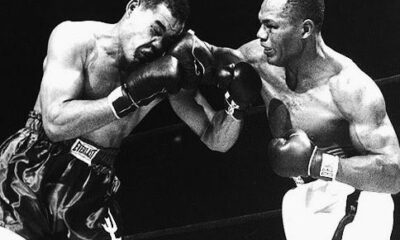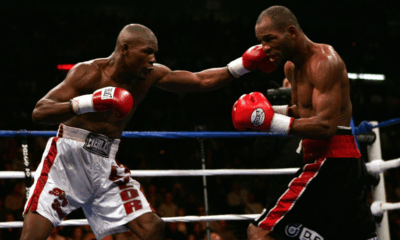Featured Articles
This Day in Boxing History: Quiet Date, Deep Resonance — Boxing’s Hidden Turning Points

November 16 reveals a fascinating cross-section of boxing’s evolution: sustained dominance, stylistic innovation, and high-stakes unification — all wrapped in different eras, and all telling part of the sport’s larger story.
Abe Attell Retains the Featherweight Crown (1906)
Abe “The Little Hebrew” Attell, an iconic featherweight of the early 20th century, was one of boxing’s earliest long-reigning champions. While the historical record is a little murky, Attell was defending his world title around this time, operating in a moment when boxing was still formalizing its identity. He outpointed Billy DeCoursey in a 15-round decision at the National Athletic Club in San Diego. During this time period, boxing was transitioning: gloves were becoming standard, rules more formalized, and “world champion” status was gaining legitimacy. Attell built a legacy of consistent defenses, helping to shift boxing from its bare-knuckle roots into a more structured, regulated sport.
“Slapsie” Maxie Rosenbloom vs. John Henry Lewis (1932)
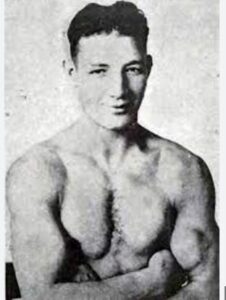
Fast-forward a few decades and the ring was home to a very different kind of combat when “Slapsie” Maxie Rosenbloom faced John Henry Lewis at the Civic Auditorium in San Francisco. Rosenbloom was not the type to rely on sheer power — he was elusive, defensively brilliant, and unpredictable, with his open-guard style and soft-hands countering conventional expectations. Lewis, by contrast, was technically precise and fundamentally sound. Their fight (a 10-round decision for Rosenbloom in their first of five meetings) wasn’t a brawl; it was a war of ring IQ, where timing, endurance, and tactical nuance defined the rounds. It remains a vivid emblem of how boxing matured into a cerebral contest, not just a brutal sport.
Héctor Velázquez vs. Bobby Pacquiao (2006)
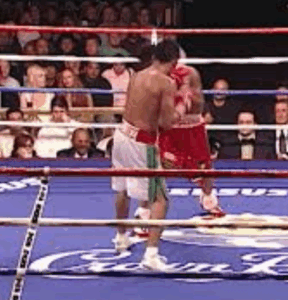
On this night, Héctor Velázquez defeated Bobby Pacquiao by disqualification in the 11th round. The ugliness of the bout — repeated low blows, mounting frustration, and a referee forced to intervene — painted a raw, emotional picture. According to the official Nevada commission record, referee Robert Byrd stopped the fight due to excessive low blows. Velázquez captured the WBC Continental Americas super-featherweight title, but the real story was about composure, self-control, and the thin line between aggression and fouling. For Pacquiao (Manny’s brother), the fight was a harsh reminder that pedigree and name recognition don’t protect you from the fundamentals: discipline and accountability in the ring.
Gilberto “Zurdo” Ramírez vs Chris Billam-Smith (2024)
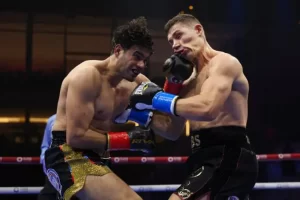
Most recently, Gilberto Ramírez unified the WBA and WBO cruiserweight titles by defeating Chris Billam-Smith at The Venue in Riyadh, Saudi Arabia. The fight took place during “Latino Night,” part of the glitzy Riyadh Season promotional series. Ramirez, fighting out of Mazatlán, Sinaloa, demonstrated superior footwork, sharp timing, and consistent power punches, earning a unanimous decision (116-112, 116-112, 116-113).
The win was historic for more than just the belts: Ramirez became the first Mexican to unify the WBA and WBO cruiserweight titles. Billam-Smith, for his part, came into the fight with grit and heart — he landed sharp hooks early and kept pressing. But Ramirez’s consistency and ring generalship prevailed, especially in the middle rounds. The Brit even sustained an eye injury as the fight progressed, but he stayed in there, pressing on through adversity.
What November 16 Reveals About Boxing
What links these moments — across more than a century — is not fireworks, but substance. Attell’s era reminds us of perseverance and legacy-building in boxing’s foundational years. Rosenbloom versus Lewis highlights how the sport developed into a cerebral duel, not just a physical contest. Pacquiao and Velázquez show us boxing’s raw edge, the personal stakes, and what happens when emotional control collapses under pressure. And Ramirez’s 2024 victory underscores the shifting of boxing’s epicenters, where significant unification bouts are no longer confined to traditional boxing capitals, but can happen on a global stage — in this case, in Saudi Arabia.
Fun Facts:
Abe Attell held the world featherweight title from 1906 to 1912 and made 21 title defenses, which was a remarkable number for that era. After retiring from boxing, he went into vaudeville — a common route for fighters of his era.
Also, following his career, he became closely associated with Arnold Rothstein, the infamous gambler tied to big-time fixings. Allegedly, Attell was a “bag man” in the 1919 Black Sox scandal – acting as in intermediary between Rothstein and several Chicago White Sox players who conspired to throw the World Series. Though he was never convicted (prosecutors struggled to pin things down), the association stained his legacy. He did, however, get inducted into boxing halls of fame, recognized both for his skill and his role in the sport’s early history.
“Slapsie” Maxie Rosenbloom earned his nickname due to his open-glove, high-guard style which was more of a slap than a punch. He was known more for his speed, rhythm, and defense than one-punch power.
Rosenbloom’s total professional bouts (including “newspaper decisions”) exceed 290 — an indicator of how active boxers were in his era. In his very last fight, he had a win over Al Ettore and stopped him in the first round, one of only 19 stoppages in Rosenbloom’s entire career. After life in the ring, Rosenbloom transitioned into entertainment, doing radio work and appearing in nearly 100 films.
*A quick side-note: In 1937, Al Ettore fought John Henry Lewis. The official scorecards of the judges were 5-4-1 and 4-3-3 for Ettore and 8-2 for Lewis. A week following the fight, the Pennsylvania Boxing Commission arbitrarily changed the verdict. Nat Fleischer call it the “worse blow at boxing…in several years”. Fleischer believed the decision had no merit and would always remain a mystery.
Over his career, John Henry Lewis amassed 117 professional fights, with 58 wins by knockout. He held the World Light Heavyweight title from 1935 to 1938 and was named by The Ring magazine as one of the greatest light-heavyweights of all time.
-
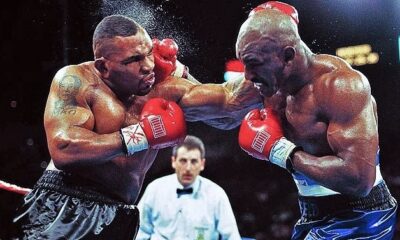
 Featured Articles4 weeks ago
Featured Articles4 weeks agoThis Day in Boxing History: Surprise, Legacy, and Transition
-

 Featured Articles4 weeks ago
Featured Articles4 weeks agoThis Day in Boxing History: Fights that Made November 10th Unforgettable
-

 Featured Articles4 weeks ago
Featured Articles4 weeks agoThis Day in Boxing History: From St. Louis to Buenos Aires
-
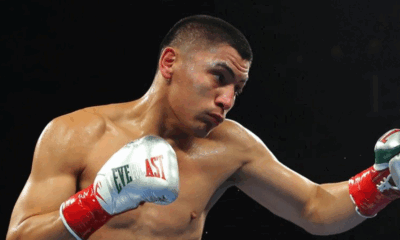
 Featured Articles4 weeks ago
Featured Articles4 weeks agoResults and Recaps from Texas where Vergil Ortiz Demolished Erickson Lubin
-
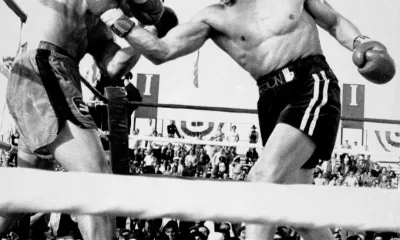
 Featured Articles3 weeks ago
Featured Articles3 weeks agoThis Day in Boxing History: A Date for Heavyweights, Shockwaves and Momentum
-

 Featured Articles4 weeks ago
Featured Articles4 weeks agoBoxing Odds and Ends: The Swedish Alliance and More Fight News
-
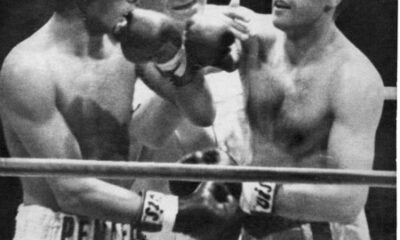
 Featured Articles4 weeks ago
Featured Articles4 weeks agoThis Day in Boxing History: Monzón’s Rise and Leonard’s Redemption
-
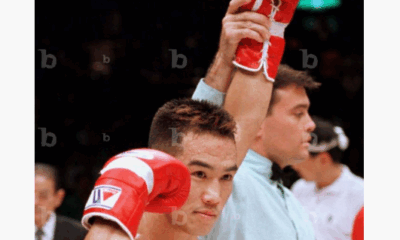
 Featured Articles4 weeks ago
Featured Articles4 weeks agoThis Day in Boxing History: Legacy, Redemption and Reinvention







